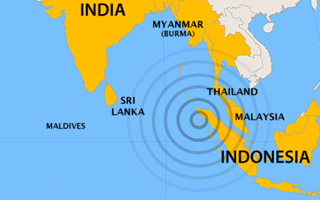 It’s impossible to turn on the TV, pick up a paper or look at a website without witnessing the influence that online social networks have gained over the last several years. They’re everywhere, and nobody can seem to decide whether this is a good thing or not. Do online networks isolate people or bring them together? Are they dangerous or empowering?
It’s impossible to turn on the TV, pick up a paper or look at a website without witnessing the influence that online social networks have gained over the last several years. They’re everywhere, and nobody can seem to decide whether this is a good thing or not. Do online networks isolate people or bring them together? Are they dangerous or empowering?
It’s tough to say, but one thing is certain: social networking has become an extremely powerful agent of change. Online networks have been growing at staggering rates–The Economist recently pointed out that if Facebook were a country it would have the third largest population in the world–and many businesses have been forced to recognize that as networks expand so does an individual’s potential influence. One of my favorite examples is Dave Carroll’s “United Breaks Guitars” YouTube campaign, which has over 9 million views. Carroll’s video not only led the airline to reverse its decision not to compensate him for the $3,000 guitar that was broken on a United flight, but also to schedule a personal call between Carroll and United execs “to make it right.”
Review sites like Yelp have also increased the potential influence that individuals have over businesses, especially those that are trying to make a name for themselves. After visiting a brewery that recently opened down the street from the Republik, one of my friends posted a less than favorable review of the fledgling establishment on Yelp. She promptly received a lengthy letter from the businesses’ owner, who urged her to revise her comments, and listed a series of points in the brewery’s defense.
Now social networking seems to be shaking up the long-established hospitality industry. Short-term rental services like AirBnB.com, istopover.com and crashpadder.com have helped create a new kind of hospitality market, the ‘social B&B’, that appeals to travelers who don’t want to stay in a hostel, but would rather not pay the exorbitant rates that hotels often charge in major cities. AirBnB.com, which encourages members to create personal profiles, allows local residents in cities throughout the world to list their apartment or house for rent. Interested travelers can then look at pictures and reviews of available rooms, which in New York go from anywhere between $10 a night to $8,000.
Social B&Bs have the potential to draw a significant portion of the market from existing establishments, and, needless to say, not everyone is happy about it. In an article on the subject that appeared in the New York Times, Benji Lanyado explains, “Innkeepers, for one, point out that [social B&Bs] are unlicensed, uninsured and, depending on local real estate laws, against the law.” Such opposition could certainly deter the growth of these sites, but I have to agree with Lanyado’s conclusion that “neither apartment owners who stand to make money…nor the growing numbers of travelers looking for a middle ground between [hostels] and a traditional…hotel are likely to be deterred.”
Hotel owners are beginning to see social networking sites as a threat, and they will understandably do what they can to limit the impact that sites like AirBnB have on their business. But if they consider other industries that have faced similar challenges–music, television, travel–they’ll eventually come to the same conclusion that we have: change or die.
by Robert Shaw West Brand Futurist The Republik Companies Chairman/CEO
Photo Credit: © TripAdvisor





